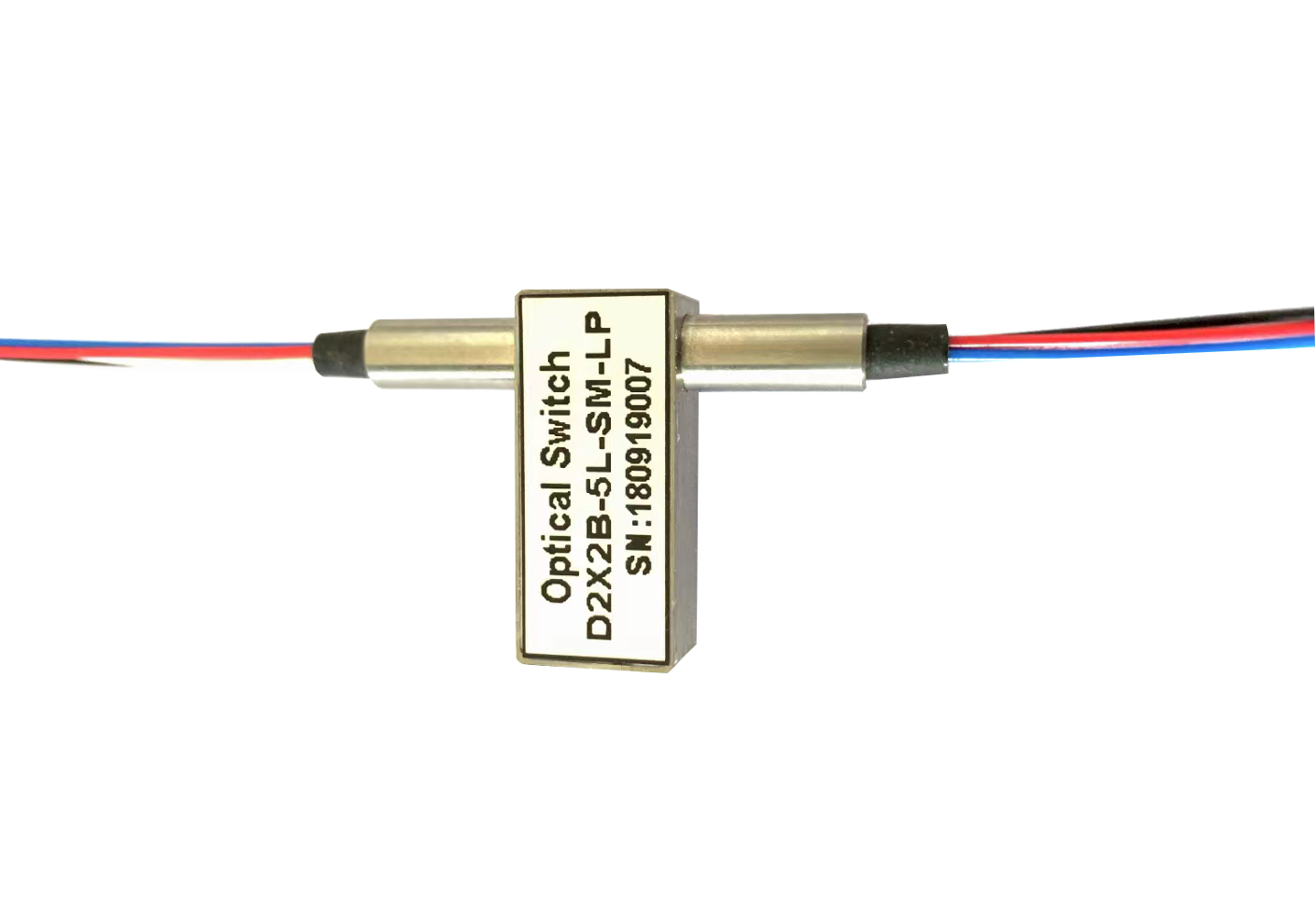What is Bypass Optical Switch?
Bypass Optical Switch (OBP) is a widely used device in optical communication and networks that allows for automatic or manual switching of signal paths when a communication link fails, ensuring uninterrupted network services. It is typically used in optical transmission systems to provide redundant paths, enhancing network reliability and flexibility.
Optical Route:

Working Principle of an Bypass Optical Switch
The basic principle of an bypass optical switch is to “bypass” the signal path in case of failure in the main transmission path by automatically switching the optical signal to a backup path, thereby preventing network disruption due to link failures. These devices generally consist of optical switches and electronic control parts and can implement switching functions using different technologies, including mechanical optical switches, MEMS (Micro-Electro-Mechanical Systems) optical switches, and optical fiber array switches.
-
Mechanical Optical Switches: These switches use physical movement to change the path of the optical signal.
-
MEMS Optical Switches: These switches rely on micro-mechanical structures, using small movements to switch the optical signal paths. MEMS switches offer advantages such as fast response, small size, and low power consumption.
-
Optical Fiber Array Switches: These switches use multiple small optical switches arranged in an array to select optical fiber paths, making them suitable for complex multi-fiber networks.
Applications of Bypass Optical Switches
Bypass optical switches are widely used in various fields, especially in systems that require high reliability and continuous connectivity. Here are some common application scenarios:
-
Data Centers and Telecom Networks
In data centers and telecom networks, optical bypass switches are used to provide redundant paths, ensuring that traffic can quickly switch to backup links in the event of a link failure, preventing service disruptions. This is crucial for the stable operation of cloud computing, big data processing, and VoIP services. -
Long-Distance Optical Fiber Transmission
In long-distance optical fiber transmission networks, such as inter-province or international links, optical bypass switches can automatically switch to backup optical fiber lines, reducing the service impact caused by a single link failure. -
Fiber Protection and Restoration
In fiber line protection and restoration, optical bypass switches enable automatic switching to backup paths when the primary link fails, ensuring quick recovery. These switches can collaborate with network monitoring systems to provide real-time fault detection and switching mechanisms.
Advantages of Bypass Optical Switches
Bypass optical switches bring several advantages to modern optical networks:
-
Improved Reliability and Stability
By providing redundant paths, bypass optical switches effectively enhance network reliability, reducing service disruptions caused by link failures. This is especially important for critical applications such as financial transactions and healthcare systems, where reliability is paramount. -
Real-Time Fault Switching
Bypass optical switches enable real-time switching with minimal delay, preventing data loss and service interruptions caused by failures. Their automation reduces the need for manual intervention, improving fault recovery speed. -
Simplified Maintenance
Bypass optical switches allow for maintenance and repair work to be carried out without interrupting service, as they can automatically detect and switch to backup paths. This increases maintenance efficiency and reduces network downtime. -
Flexible Network Architecture
Bypass optical switches support various configurations and architectures, allowing for flexible deployment based on different network needs. In large networks, the scalability of bypass switches enables more flexible network design, allowing operators to add or remove devices as required.
Challenges of Bypass Optical Switches
Despite the many advantages of bypass optical switches in optical fiber communication systems, they also face some challenges:
-
Cost
High-performance bypass optical switches, such as MEMS-based switches, can be costly, which may pose a burden for medium- and small-sized networks or cost-sensitive applications. -
Optical Signal Loss
While bypass optical switches have made significant progress in minimizing signal loss, in certain cases, especially over long distances, the switch may introduce additional signal loss, requiring compensation through other means. -
Complexity and Management
In complex network environments, configuring and managing bypass optical switches may require specialized personnel. Particularly in large-scale deployments, managing and coordinating these switches effectively can increase operational complexity.
Conclusion
As an essential optical network protection mechanism, the bypass optical switch plays a crucial role in modern communication and data transmission systems. By providing redundant paths and real-time fault switching, it ensures network stability, reliability, and efficiency. With advancements in technology, the application of optical bypass switches will become even more widespread, especially in industries that demand high network reliability. Their importance will continue to grow as the need for uninterrupted, high-performance optical networks increases.

Comments are closed